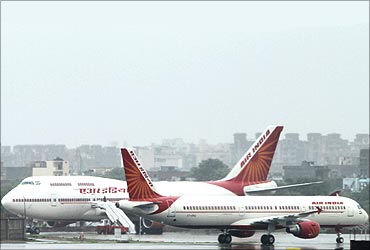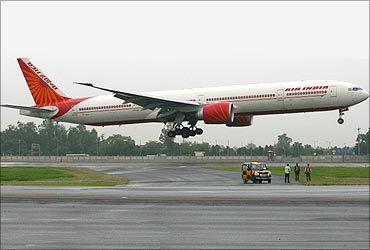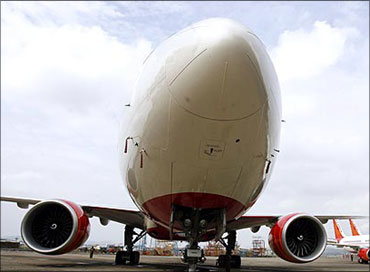 | « Back to article | Print this article |
Now, CAG blasts ministry for Air India mess
The civil aviation ministry initiated and then made a mess of the merger of the erstwhile Indian Airlines with Air India, according to a Comptroller and Auditor General report.
The national auditor also said Accenture, the consultant asked to prepare the merger plan, did not do enough work on the move's financial implications.
CAG did not agree with the theory that the merger was initiated by AI or IA in April 2006. The process, it said, was 'top down'; the ministry directed the erstwhile AI to appoint a consultant for the process.
After doing so, it said, the ministry failed to do a good monitoring job.
Click NEXT to read on . . .
Now, CAG blasts ministry for Air India mess
Accenture failed to provide a detailed, item-wise, financial analysis of the reasonableness of the projected savings, said CAG.
The only major accounting implication it mentioned was that the net worth would go up considerably (Rs 185 crore as of 2005-06 to Rs 2,557 crore), mainly due to revaluation of fixed assets by 50 per cent of the current book value.
CAG said this was just window-dressing of accounts, without any cash flow or operational benefits. Questioning Accenture's projections, it said one key assumption related to employee productivity was that the merged entity would have fewer employees per aircraft. This did not happen.
AI and IA were merged on March 1, 2007. The new company was called National Aviation Company of India Ltd, later changed to Air India Ltd. However, the merger has come under fire because of poor integration, leading to a rise in accumulated losses to Rs 15,000 crore (Rs 150 billion).
Click NEXT to read on . . .
Now, CAG blasts ministry for Air India mess
This is seen as a key reason for the company's current financial and operational mess.
CAG said the ministry did not do any monitoring or got progress reports. Also, it did not give any feedback to the companies on achievement of targets, it said.
Only the Department of Public Enterprises did some monitoring but this had little or no correlation with the actual performance, it said. CAG said minor parameters, such as the number of employees trained or preparation of plans, were given undue weight. This skewed the ratings to present a rosy picture, it said.
The merged company lost Rs 2,226 crore in 2007-08, Rs 7,189 crore in 2008-09 and Rs 5,551 crore in 2009-10.
It got Rs 800 crore in 2009-10 and Rs 1,200 crore in 2010-11 from the government as equity. It has sought an immediate equity infusion of Rs 6,000 crore and restructuring of working capital loans if it is to survive.



